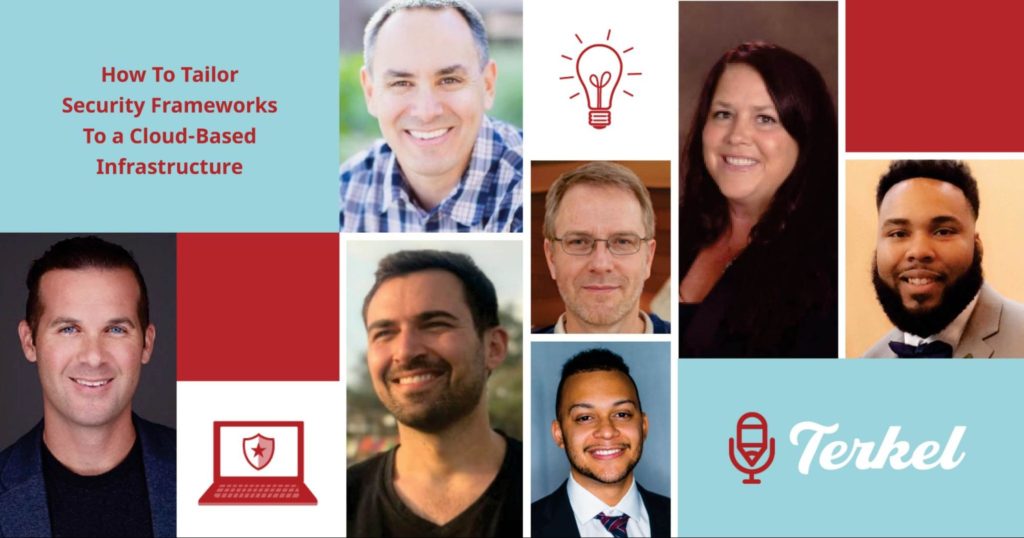
According to Forbes, 83% of organizational workloads will be shifted to a cloud-based infrastructure by the end of 2020. Because it’s a new and rapidly evolving technology, many organizations don’t know enough about comprehensive cloud security.
How can organizations tailor their security frameworks to a cloud-based infrastructure?
To help organizations tailor their security frameworks to a cloud-based infrastructure, we asked tech experts and business leaders this question for their best advice. From conducting objective risk assessments to reducing the number of access points, here are seven tips for tailoring your organization’s security frameworks to a cloud-based infrastructure:
- Conduct objective risk assessments.
- Identify a clear plan for detection.
- Identify, protect, detect, respond, and recover.
- Understand shared responsibilities.
- Pursue cloud certifications.
- Reduce the number of access points.
- Consider log-in credentials needed.
Conduct objective risk assessments.
“When it comes to cloud-based infrastructures, the key is to continually run security scans to monitor activity. Much like we do in the insurance industry, every company should conduct an objective risk assessment to identify vulnerabilities and patch security threats. The risk assessment will reveal just how exposed data can be when operating in the cloud.”
Vicky Franko, Insura
Identify a clear plan for detection.
“A security framework is so important because it wards off any hackers or cyber criminals from accessing your company records. To tailor this framework to a cloud-based infrastructure, there are several things to consider. The most important, in my opinion, is identifying a clear plan for detection. You must take the appropriate actions to identify any cybersecurity breaches and events as soon as they happen to keep your info on a cloud-based infrastructure safe and secure.”
Carey Wilbur, Charter Capital
Identify, protect, detect, respond, and recover.
“Security is at the core of what we do. It is so important to make sure your intellectual property, sensitive information, and digital files are safe from hackers. The best way to handle security measures is by following these five steps: Identify, Protect, Detect, Respond, and Recover. Following these five steps will ensure the protection of your cloud-based infrastructure.”
Michael Staton, Lyon Shield Security
Understand shared responsibilities.
“It’s always best to err on the side of caution when adapting your security to a cloud-based infrastructure. Be sure you fully understand the shared responsibilities that exist between you and your provider. Harden your systems as much as possible and treat the environment the same as you would if it were sitting on the public internet.”
Cardell Robinson, 365 Cannabis
Achieve cloud certifications.
“Employers can and should encourage technical employees to achieve cloud certifications in Azure, AWS, and possibly Oracle. By training employees to be more knowledgeable about cloud-based infrastructures, organizations can tailor their security frameworks to internal needs. Train and reward employees for seeking out these cloud certifications, and work with them to apply this knowledge to existing opportunities within your business.”
Brett Farmiloe, Markitors
Reduce the number of access points.
“An easy way to tailor your security frameworks for the cloud is to reduce the number of access points. For example, you may limit the number of user accounts, or if everyone needs a user account then limit the number of admin accounts. By having less access points, there are fewer targets for malware, hackers, and other malicious actors that try to access your systems.”
Michael Alexis, Teambuilding
Consider log-in credentials needed.
“Cloud computing is not only popular, but the new norm for businesses across the country looking for security solutions. Businesses should keep in mind the challenges of moving from local files to cloud-based security frameworks, but for many, the payoff is worth the effort. Cloud-based software is available in many forms, and organizations should consider their security needs and goals before jumping the gun. Next, organizations should consider the log-in credentials needed to access the software. For many, limited access to the server is necessary for continued privacy. Organizations can then determine the automated services available to them through the cloud while determining the desired remote location of the secured files. Moving to cloud computing can be the best decision you ever made for your company and should be taken advantage of in the technological age.”
Heinrich Long, Restore Privacy